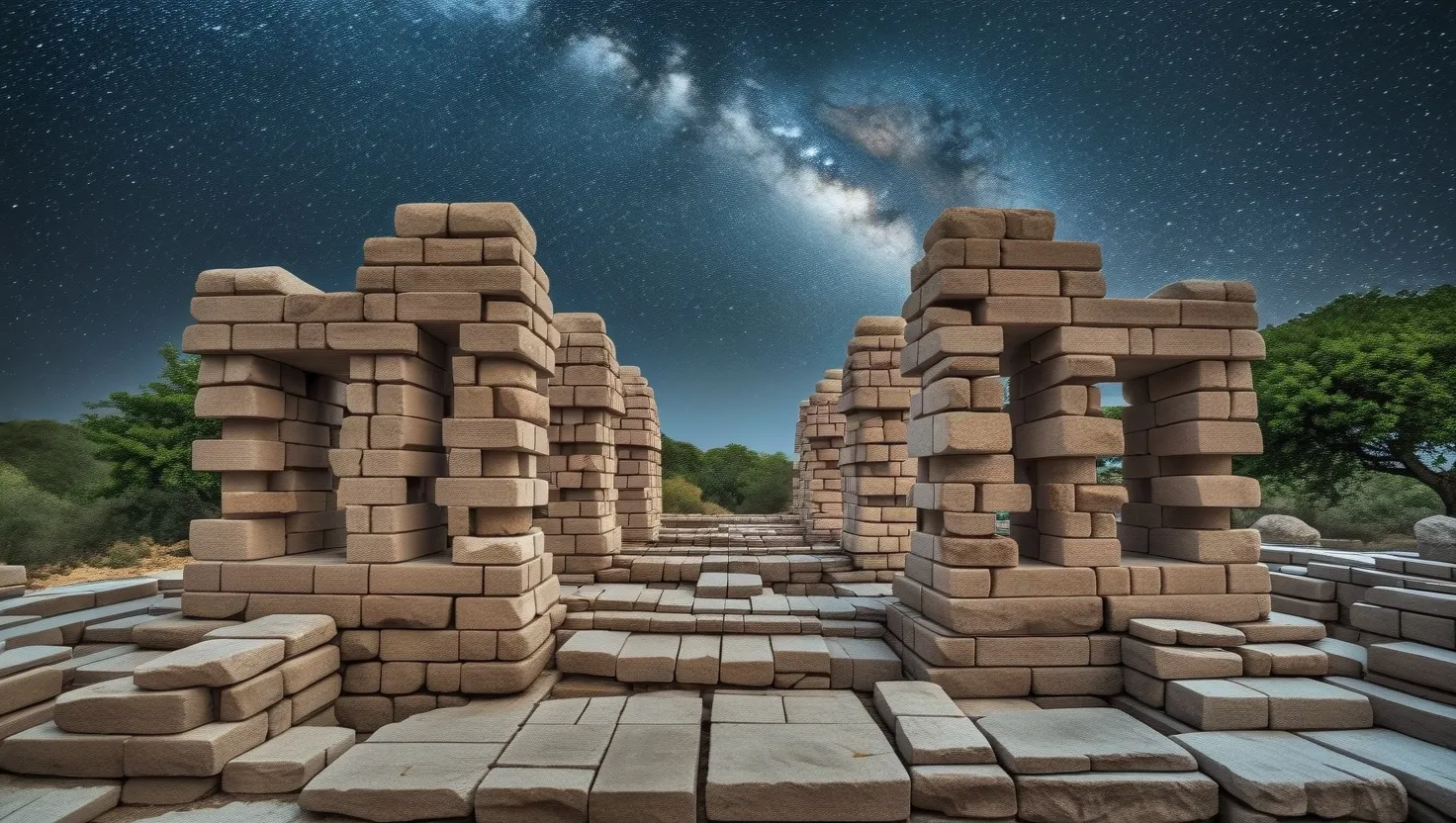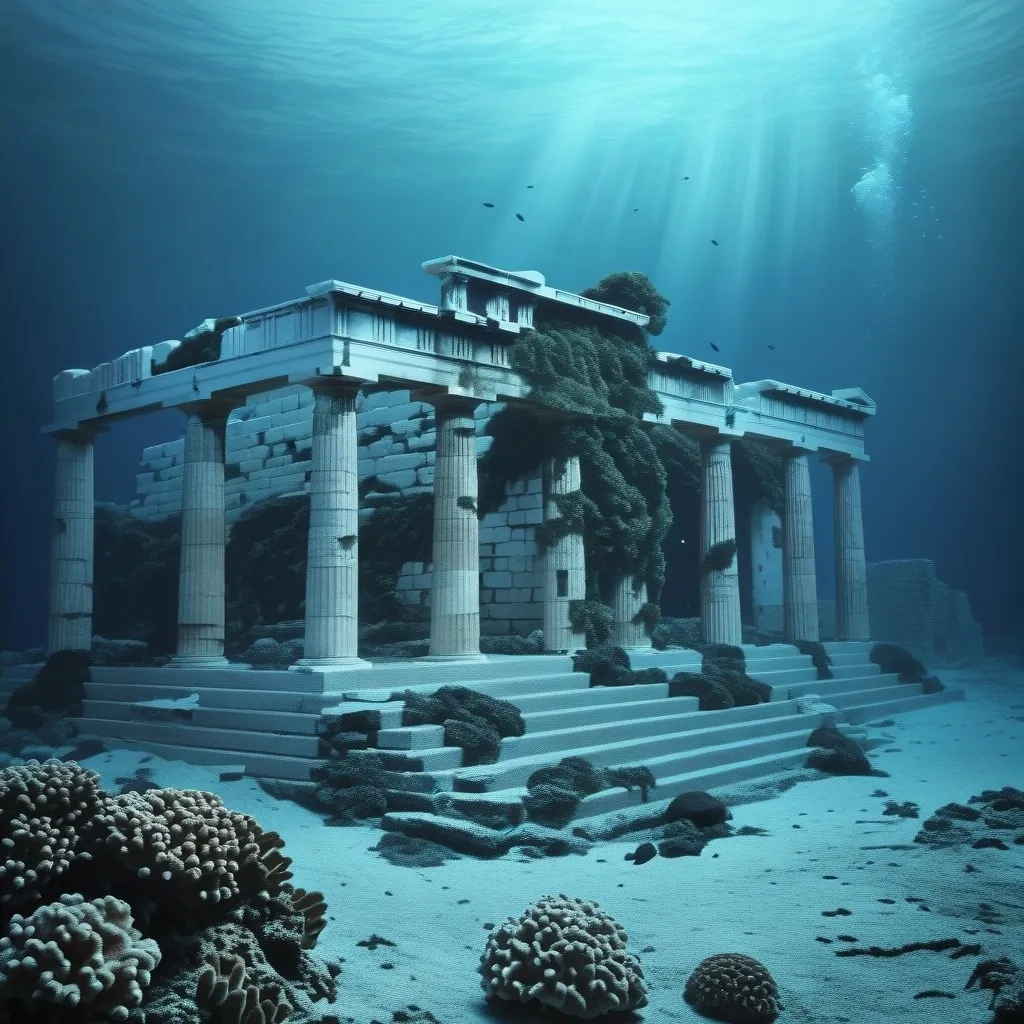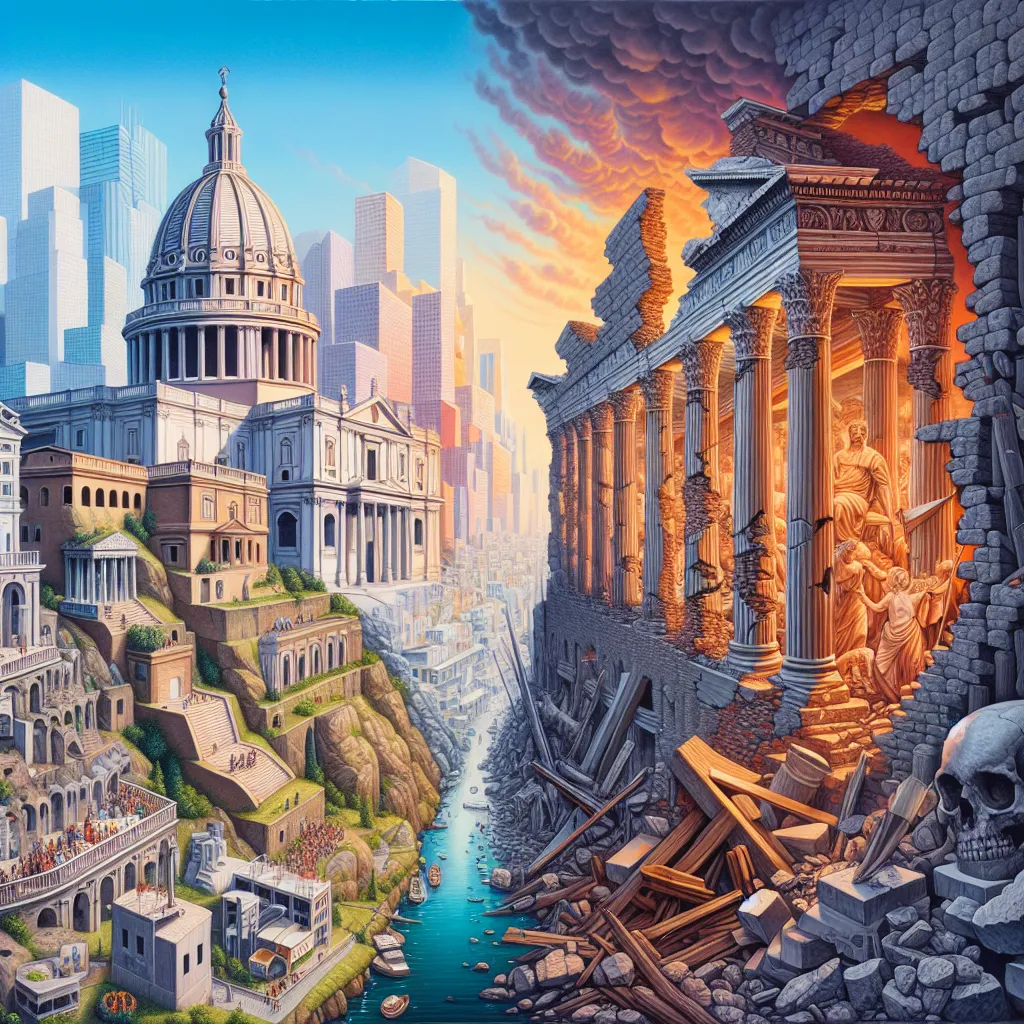As I stand before the grandeur of ancient architectural wonders, I am often left with more questions than answers. These structures, built centuries ago, continue to baffle historians and engineers alike with their precision, ingenuity, and mysterious construction techniques. Here, we delve into seven unexplained anomalies in ancient architecture that challenge our understanding of what was possible with the technology of the time.
The Perfect Acoustics of Epidaurus Theater
Imagine a theater where every whisper from the stage can be heard clearly by the audience, regardless of their seat. This is the reality of the Epidaurus Theater in Greece, a marvel of ancient engineering. The curved shape of the theater, combined with the strategic placement of its seats, creates a natural echo chamber that amplifies sound without producing any echoes. This precision in acoustic design is a testament to the advanced understanding of sound waves by ancient Greeks.
“The whole is more than the sum of its parts,” as Aristotle once said. In the case of Epidaurus, this phrase rings particularly true, as the collective design elements come together to create an auditory experience that is nothing short of magical.
Earthquake-Resistant Design of Machu Picchu
Perched on a mountain ridge in Peru, Machu Picchu is a city that has withstood the test of time and the fury of earthquakes. The Inca engineers who built this city employed a technique known as “ashlar construction,” where stones were cut to fit together without mortar, allowing for slight movements during seismic activity. This innovative design has kept the city intact for centuries, a feat that modern engineers can only aspire to replicate.
How did the Incas develop such a sophisticated understanding of seismic engineering? The answer remains a mystery, but it is clear that their techniques were far ahead of their time.
Advanced Hydraulic System of Mohenjo-daro
In the ancient city of Mohenjo-daro, part of the Indus Valley Civilization, lies a sophisticated hydraulic system that is a marvel of ancient engineering. The city’s advanced sewage and drainage systems, complete with public baths and private toilets, were unparalleled in the ancient world. The precision and complexity of these systems suggest a high level of technological advancement, far beyond what was thought possible for that era.
As the ancient Greek philosopher, Heraclitus, said, “No man ever steps in the same river twice, for it’s not the same river and he’s not the same man.” Similarly, the engineers of Mohenjo-daro were not just building structures; they were creating a sustainable ecosystem that supported an entire civilization.
Precise Astronomical Alignments of Angkor Wat
Angkor Wat, the majestic temple complex in Cambodia, is more than just a religious site; it is an astronomical observatory. The alignment of its towers and walls corresponds to the movements of celestial bodies, reflecting a deep understanding of astronomy by its builders. This precision in alignment is not just a coincidence but a deliberate design choice that underscores the advanced knowledge of the ancient Khmer people.
“The universe is not only stranger than we think, it is stranger than we can think,” said Albert Einstein. The astronomical alignments of Angkor Wat are a reminder that ancient civilizations were capable of understanding and interpreting the universe in ways that are still awe-inspiring today.
Megalithic Construction of Sacsayhuamán
Sacsayhuamán, the fortress above Cusco, Peru, is a testament to the engineering prowess of the Incas. This megalithic structure is composed of massive stone blocks, some weighing as much as 125 tons, fitted together with incredible precision. The question of how these massive stones were transported and placed remains one of the greatest mysteries of ancient architecture.
As the Inca proverb goes, “The stone the Inca moves, the Inca moves the stone.” This enigmatic saying hints at a deep understanding of physics and engineering that allowed the Incas to achieve what seems impossible to us today.
Mysterious Metal Clamps in Egyptian Temples
In the temples of ancient Egypt, archaeologists have found mysterious metal clamps holding the stone blocks together. These clamps, often made of copper or bronze, are a puzzle because they suggest a level of metallurgical expertise that was not thought to exist at that time. The presence of these clamps raises questions about the tools and knowledge available to ancient Egyptian builders.
“Knowledge is the treasure of a wise man,” said an ancient Egyptian proverb. The use of metal clamps in Egyptian temples is a treasure trove of knowledge waiting to be fully understood.
Advanced Ventilation System of Petra
Petra, the ancient city carved into the sandstone cliffs of Jordan, boasts an advanced ventilation system that kept its inhabitants cool in the scorching desert heat. The narrow canyon known as the Siq, which serves as the main entrance to Petra, is designed to funnel cool air into the city, while the intricate network of channels and vents ensures a constant flow of fresh air. This sophisticated ventilation system is a testament to the ingenuity of the Nabataeans who built Petra.
As the saying goes, “Necessity is the mother of invention.” The harsh desert environment of Petra necessitated innovative solutions, and the Nabataeans delivered with a ventilation system that is still impressive today.
Theories and Implications
These anomalies in ancient architecture challenge our conventional understanding of what was possible with the technology of the time. They suggest that ancient civilizations had access to knowledge and tools that have been lost to us. The implications are profound: if ancient engineers could achieve such feats, what other technologies might have been developed and then forgotten?
“The greatest glory in living lies not in never falling, but in rising every time we fall,” said Nelson Mandela. The study of these ancient anomalies is a journey of discovery, a rise into the unknown, where each new finding opens up more questions and more wonders.
As we continue to explore these architectural marvels, we are reminded that history is not just a series of events but a tapestry of human ingenuity and creativity. Each anomaly we uncover is a thread in this tapestry, weaving together a narrative that is both fascinating and humbling.
So, the next time you stand before an ancient monument, remember that you are not just looking at a relic of the past; you are witnessing the pinnacle of human achievement, a testament to what can be accomplished when creativity, ingenuity, and determination come together. And perhaps, just perhaps, you might uncover a piece of that lost knowledge, hidden in the stones and the silence of these ancient wonders.






